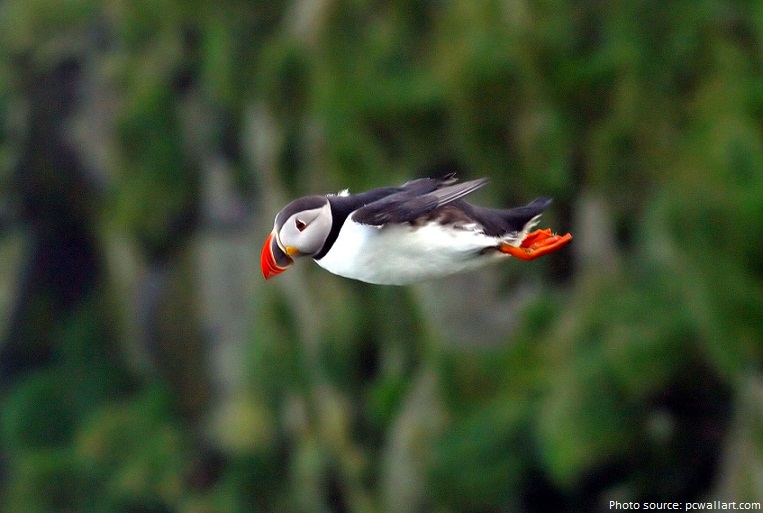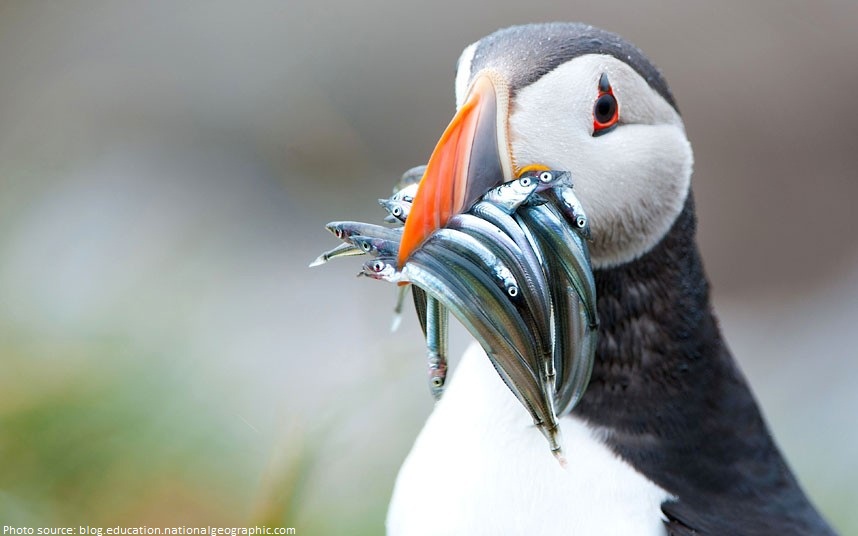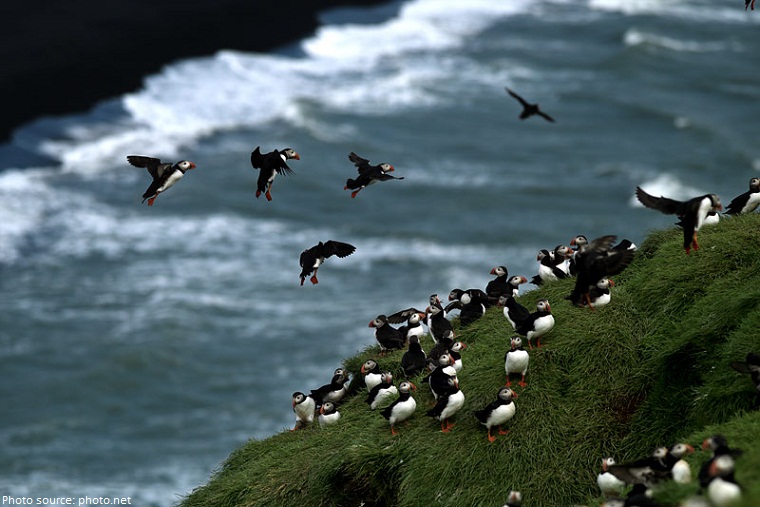Atlantic puffin is a small bird. It weighs 0.5 kilograms (17.5 ounces) and can reach 25 centimetars (10 inches) in length. Males are slightly bigger than females.
Nicknamed ‘sea parrots‘ – and sometimes ‘clowns of the sea‘! – Atlantic puffins have black and white feathers and a large parrot-like beak.
Puffins are fab flyers, flapping their wings up to 400 times a minute and speeding through the air at up to 88km/h (55 mp/h).

What’s more, these brilliant birds are great swimmers, too! Using their webbed feet as a rudder, puffins can dive down 60 meters (197 feet) under water in search of their favorite fish.
For most of the year, Atlantic puffins live on the open ocean, with a range spanning from the eastern coast of Canada and the northern United States to the western coast of Europe and northern Russia. 60% of the world’s puffins live near Iceland.
Mating season takes place from April to August. During this period, large colonies of Atlantic puffins gather in their home grounds.
A puffin’s beak (or bill) changes color during the year. In winter, the beak has a dull grey color, but in
spring it blooms with an outrageous orange! It’s thought that the bright color helps puffins assess potential mates.
They build burrow in the rocky cliffs or on the solid ground between rocks. Burrows are located 3 feet underground.
Puffins lay just one egg per year—and usually with the same mate. Like some penguins, both parents take turns incubating the egg and caring for the chick.
Puffins are one of the few birds that have the ability to hold several small fish in their bills at a time. Their raspy tongues and spiny palates allow them to firm grasp 10 to 12 fish during one foraging trip. They thus can bring more food back to their young compared with other seabirds that tend to swallow and regurgitate meals for their chicks.

After 45 days, the chick leaves the burrow and spends 3-5 years at sea learning about feeding places and choosing a mate. In the wild, puffins can live around 20 years.
Body of Atlantic puffin is covered with black and white plumage. In the past, feathers of Atlantic puffins were used for decoration of hats.
Their main predator is the great black-backed gull, which can capture a puffin mid-flight or swoop in on a puffin on the ground.
With 6 million alive today puffins are not classed as an endangered species, populations in some places are in decline. The main threats are over-fishing, which can lead to a shortage of food for puffins, and pollution – particularly oil spills. Not only does the oil make these beautiful birds sick, it destroys their waterproof feathers, essential for their survival.
The Atlantic puffin is the official bird symbol of the province of Newfoundland and Labrador, Canada

